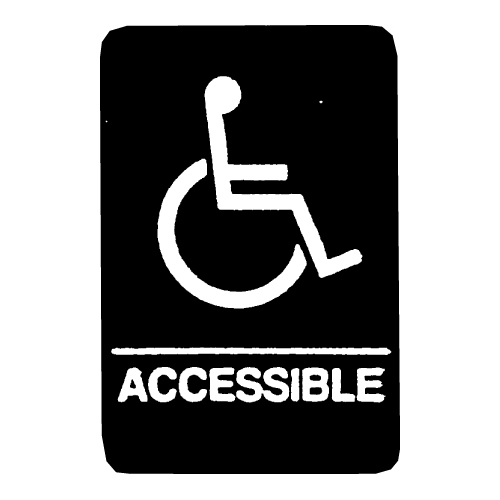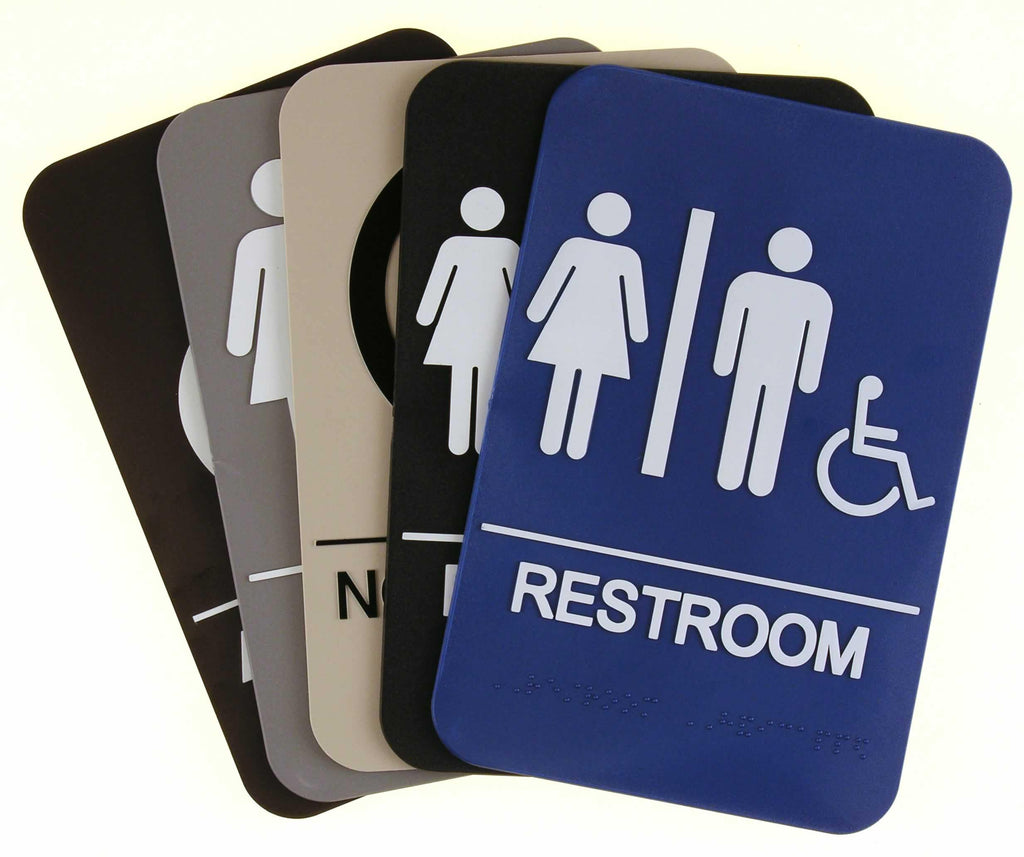Discover the Relevance of ADA Signs in Public Spaces
Discover the Relevance of ADA Signs in Public Spaces
Blog Article
Discovering the Key Functions of ADA Indicators for Enhanced Access
In the world of ease of access, ADA indicators offer as quiet yet effective allies, guaranteeing that areas are comprehensive and accessible for people with disabilities. By integrating Braille and tactile elements, these indicators break obstacles for the aesthetically impaired, while high-contrast shade plans and understandable fonts provide to varied aesthetic requirements.
Relevance of ADA Compliance
Making sure compliance with the Americans with Disabilities Act (ADA) is crucial for promoting inclusivity and equivalent gain access to in public spaces and work environments. The ADA, enacted in 1990, mandates that all public facilities, employers, and transport services suit individuals with handicaps, ensuring they appreciate the exact same rights and opportunities as others. Conformity with ADA criteria not only meets lawful commitments however additionally enhances an organization's online reputation by demonstrating its dedication to diversity and inclusivity.
One of the essential aspects of ADA conformity is the execution of obtainable signage. ADA signs are developed to make certain that individuals with disabilities can easily navigate with structures and rooms. These indicators should comply with details guidelines concerning dimension, font, shade contrast, and placement to ensure visibility and readability for all. Appropriately implemented ADA signs helps eliminate obstacles that people with disabilities commonly run into, thus advertising their independence and confidence (ADA Signs).
In addition, adhering to ADA laws can mitigate the risk of potential penalties and legal consequences. Organizations that fall short to adhere to ADA standards might face legal actions or penalties, which can be both harmful and monetarily challenging to their public picture. Thus, ADA compliance is important to fostering an equitable environment for everybody.
Braille and Tactile Components
The unification of Braille and responsive components right into ADA signage embodies the principles of availability and inclusivity. It is usually positioned under the matching text on signage to guarantee that individuals can access the information without aesthetic help.
Tactile aspects prolong beyond Braille and include elevated characters and icons. These components are designed to be noticeable by touch, enabling people to identify space numbers, restrooms, exits, and various other important areas. The ADA establishes specific standards regarding the size, spacing, and positioning of these tactile aspects to maximize readability and guarantee consistency across various environments.

High-Contrast Color Design
High-contrast color design play an essential duty in enhancing the visibility and readability of ADA signs for people with aesthetic problems. These systems are crucial as they make best use of the distinction in light reflectance in between message and history, guaranteeing that indicators are conveniently discernible, even from a index range. The Americans with Disabilities Act (ADA) mandates using specific shade contrasts to accommodate those with limited vision, making it an important aspect of conformity.
The efficiency of high-contrast shades hinges on their ability to stand apart in various lights problems, consisting of dimly lit atmospheres and areas with glare. Commonly, dark text on a light background or light message on a dark background is employed to attain optimal contrast. For example, black message on a white or yellow background provides a stark aesthetic difference that aids in quick acknowledgment and understanding.

Legible Fonts and Text Size
When thinking about the style of ADA signage, the option of clear font styles and proper message size can not be overemphasized. These aspects are vital for making certain that signs are easily accessible to people with aesthetic problems. The Americans with Disabilities Act (ADA) mandates that typefaces have to be sans-serif and not italic, oblique, manuscript, very decorative, or of unusual type. These needs aid make certain that the message is quickly legible from a distance and that the characters are distinguishable to varied audiences.
According to ADA guidelines, the minimal message elevation visit this web-site should be 5/8 inch, and it needs to enhance proportionally with seeing distance. Consistency in text dimension adds to a cohesive visual experience, assisting individuals in navigating settings effectively.
In addition, spacing in between letters and lines is indispensable to clarity. Adequate spacing avoids personalities from showing up crowded, enhancing readability. By sticking to these standards, developers can significantly boost availability, making sure that signage offers its designated function for all people, no matter their aesthetic capacities.
Efficient Positioning Techniques
Strategic placement of ADA signage is crucial for making the most of access and making certain conformity with legal requirements. ADA standards stipulate that indicators ought to be mounted at a height in between 48 to 60 inches from the ground to ensure they are within the line of view for both standing and seated individuals.
In addition, indications need to be positioned adjacent to the latch side of doors to enable easy identification prior to entrance. Consistency in sign placement throughout a center improves predictability, decreasing complication and improving general individual experience.

Final Thought
ADA indicators play a vital duty in promoting accessibility by incorporating attributes that attend to the demands of individuals with handicaps. These components jointly promote an inclusive atmosphere, underscoring the relevance of ADA compliance in making certain equal access for all.
In the world of accessibility, ADA signs serve as quiet yet effective allies, making sure i loved this that rooms are accessible and inclusive for individuals with disabilities. The ADA, enacted in 1990, mandates that all public centers, companies, and transport solutions accommodate individuals with specials needs, ensuring they appreciate the same legal rights and possibilities as others. ADA Signs. ADA indications are made to ensure that people with specials needs can quickly navigate with structures and areas. ADA guidelines stipulate that indications ought to be placed at an elevation in between 48 to 60 inches from the ground to guarantee they are within the line of view for both standing and seated individuals.ADA indicators play a crucial role in advertising ease of access by integrating features that address the requirements of individuals with handicaps
Report this page